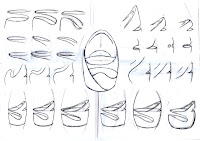
Monday, October 11, 2010
Thursday, October 7, 2010
Wednesday, October 6, 2010
Tuesday, October 5, 2010
Research
 History of chair
History of chairThe chair is of extreme antiquity, although for many centuries and indeed for thousands of years it was an article of state and dignity rather than an article of ordinary use. “The chair” is still extensively used as the emblem of authority in the British House of commons and in public meetings. It was not, in fact, until the 16th century that it became common anywhere. The chest, the bench and the stool were until then the ordinary seats used to be used for bathroom use. and the number of chairs which have survived from an earlier date is exceedingly limited; most of such examples are of ecclesiastical or seigneurial origin. Our knowledge of the chairs of remote antiquity is derived almost entirely from monuments, sculpture and paintings. A few actual examples exist in the British Museum, in the Egyptian museum at Cairo, and elsewhere.
A chair is a stable, raised surface used to sit on, commonly for use by one person. Chairs often have the seat raised above floor level, supported by four legs. However, a chair can have three legs (in a triangle shape) or could have a different shape depending on the criteria of the chair specifications. A chair without a back or arm rests is a stool, or when raised up, a bar stool. A chair with arms is an armchair and with folding action and inclining footrest, a recliner. A permanently fixed chair in a train or theater is a seat or airline seat; when riding, it is a saddle and bicycle saddle, and for an automobile, a car seat or infant car seat. With wheels it is a wheelchair and when hung from above, a swing.
The design may be made of porous materials, or be drilled with holes for decoration; a low back or gaps can provide ventilations. The back may extend above the height of the occupant's head, which can optionally contain a head rest.
For this project I have to redesign a chair with new functions and forms. On these days, it developed in so many different way. There are various types of chairs and even designs are keep change into new way. I'm thinking of redesign a storageable chair(which it can placed in cafe) into unique forms.
Reference: http://en.wikipedia.org/wiki/Chair
Storage Chair


Sofa

Wednesday, August 11, 2010
Subscribe to:
Comments (Atom)












































